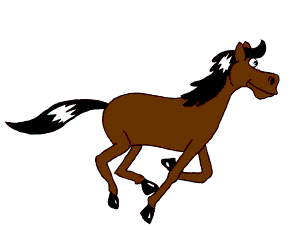The persistence of vision is a series of images collated together to create the belief that an object is moving, this is created through a series of images being taking very closely together with little movement between each shot. This is also known as the perception of vision.
The discovery of persistence of vision is attributed to the Roman poet Lucretius, although he only mentions it in connection with images seen in a dream. In the modern era, some stroboscopic experiments performed by Peter Mark Roget in 1824 were also cited as the basis for the theory.
The above GIF of a horse is a collation of 12 images per second to create the effect of a moving horse. Other examples of the persistence of vision can include a flip-book.

No comments:
Post a Comment